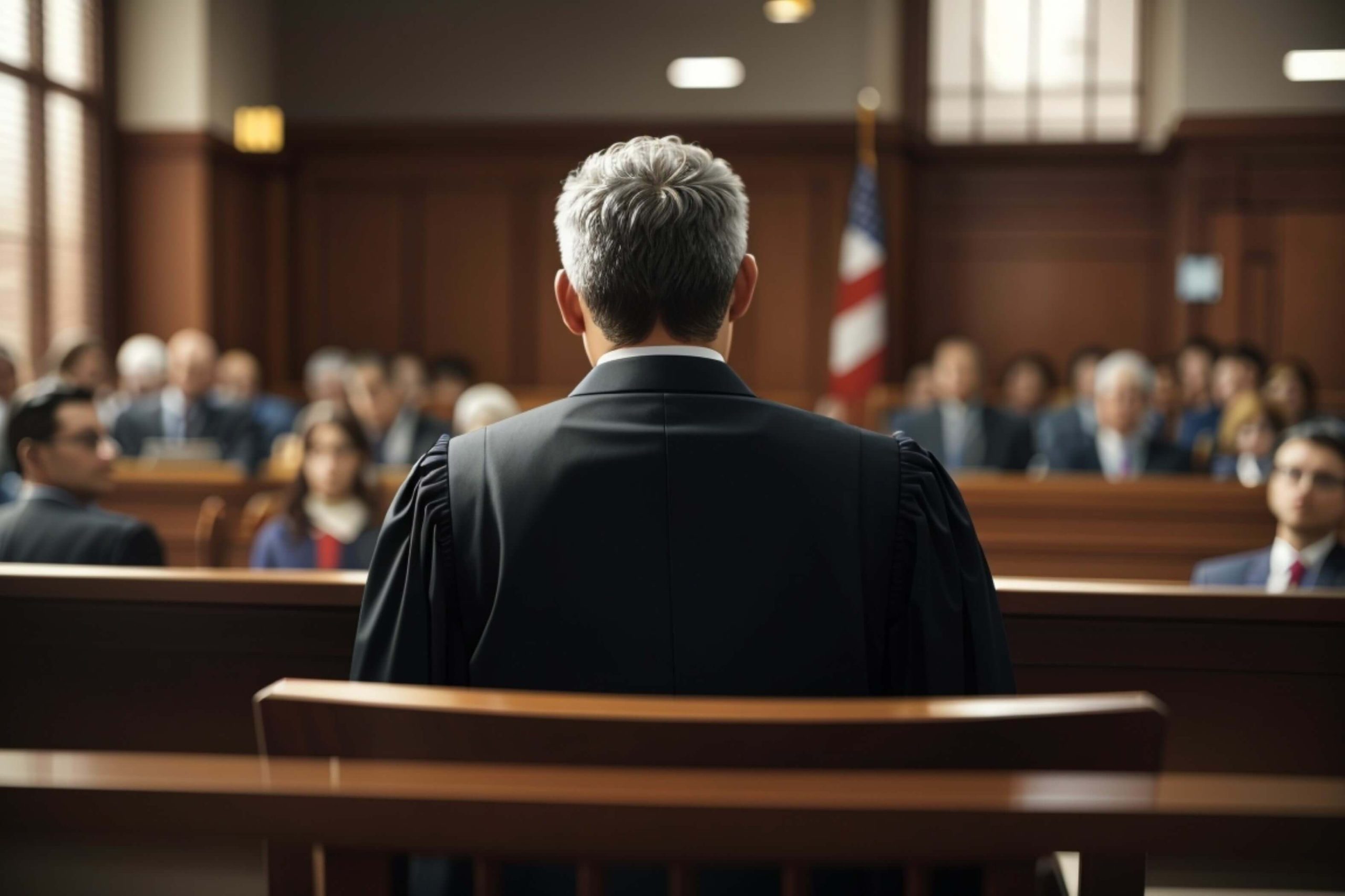Facing criminal charges in California with prior strike convictions can significantly impact your sentencing outcome. In such situations, understanding the “Romero Motion” becomes crucial. This legal tool offers a glimmer of hope, potentially leading to the removal of prior strikes and, consequently, a reduced sentence.
You committed an error, experienced the outcomes, and served your sentence. However, at present, California’s notorious Three Strikes law is impeding your progress, posing a risk of severe consequences for even a minor transgression. This situation appears unjust and gives the impression that the system is heavily biased against you. However, the ray of optimism is the Romero Motion.
Stay tuned as we explore this intricate subject!

What is a Romero Motion?
But what is a Romero Motion specifically? Consider a Romero Motion as a legal tool akin to an eraser, specifically crafted to eradicate the detrimental strike designation associated with a prior conviction. Doing so can significantly diminish the potential sentence you or a loved one may encounter under the Three Strikes Law [1].
Imagine the scenario of transitioning from receiving a 25-year-to-life sentence for a minor theft offense to being subjected to a just and appropriate penalty that acknowledges one’s personal development and successful reformation. This prospect seems rather promising.
It’s important to note that a Romero Motion is not a direct challenge to the constitutionality of the Three Strikes Law itself, but rather a legal avenue to address its potential harshness in certain cases.
Historical Background of Romero Motion
In 2007, the California Supreme Court acknowledged the potential excessiveness of the Three Strikes law and introduced the Romero Motion California, granting judges the authority to recognize individuals who have successfully rehabilitated themselves.
It all started with a landmark case known as People v. Romero [2]. Jesus Romero, convicted of petty theft (a candy bar!), also had a past burglary conviction—his first strike. The Three Strikes law saw red and demanded a life sentence.
But the California Supreme Court [3], realizing the excessiveness of the Three Strikes rule, stepped in. In the landmark “People v. Romero” case, they created the so-called “Romero Motion” we’re analyzing today, a legal lifeline for people facing unfairly long sentences.
But this wasn’t just about Romero. It was about countless others trapped by the Three Strikes’ rigidity. The Romero Motion empowered defense attorneys to argue for justice, considering each case’s unique circumstances and the potential for someone like Romero to have truly changed.
So, was Romero freed? He didn’t walk away scot-free, but his sentence became far more proportional to his actual crime. And more importantly, countless others got a chance to fight for a fairer future, thanks to a landmark case that started with a candy bar and a fight for justice.
The Three Strikes Law: An Overview
Imagine you stumble, make a mistake, and end up with a criminal record [4]. Years later, you’ve turned your life around, but that past mistake hangs over you like a dark cloud. Enter the Three Strikes Law: a California rule that says two “strikes” on your record, even for non-violent offenses, and your next slip-up, no matter how minor, could land you in prison for 25 years to life.
Now, some folks believe the Three Strikes Law is necessary to keep dangerous criminals off the streets. But critics argue it throws the book at everyone, regardless of the circumstances. Imagine getting years and years in prison for petty theft because you have two prior non-violent convictions! It seems a bit excessive, right?
The Romero Motion California aims to fix that imbalance. It lets trial judges consider the individual, their rehabilitation efforts, and the nature of their current offense. So, while it doesn’t erase the past, it offers a chance for a more proportional sentence and a brighter future.
Does Removal Of A Strike Also Strike The Conviction From My Record?
Although a victorious Romero Motion eliminates the designation of strike offenses, the conviction remains present on your record.
However, it is akin to contrasting a scarlet letter with a faded blemish. This infraction no longer automatically excludes you from employment, housing, or other prospects. This represents a move taken to reconstruct one’s life.
How to File a Romero Motion
If you are thinking about filing a Romero Motion, attempting this path on your own is not advisable, that must be said! Filing a Romero Motion involves complex legal intricacies that are best handled by a proficient criminal defense attorney.
Here is an overview of the steps that you should usually follow:
- Consult with an experienced criminal defense attorney: A knowledgeable attorney will assess the unique circumstances of your case and guide you through the intricacies of filing a Romero Motion.
- Gather supporting evidence: It’s crucial to compile compelling evidence that supports your argument for striking a prior strike conviction. This may include character references, rehabilitation efforts, and other relevant documentation.
- File the motion with the court: Your attorney will draft and file the Romero Motion on your behalf, outlining the legal grounds and substantial reasons to motion to dismiss a prior strike conviction.
- Attend the motion hearing: The court will schedule a hearing to review your Romero Act and consider the arguments presented by both the prosecution and your defense team. It’s vital to be prepared and present your case persuasively.
- Await the court’s decision: After considering all the evidence and arguments, the court will either grant a Romero Motion. If successful, the prior strike conviction will be stricken, potentially resulting in a reduced sentence.
Upon evaluating your situation, gathering evidence, and constructing a persuasive case, they will emphasize your rehabilitation, the characteristics of your prior offense, and the potential injustice of the Three Strikes Law in your particular circumstances. Consider them your legal advocate, diligently pushing for a renewed opportunity.
Arguments For and against Romero Motions
There are individuals who hold a strong affinity for Romero Motions, perceiving them as a symbol of optimism that safeguards rehabilitated individuals from excessively severe consequences, even in scenarios like committing burglary, attempted burglary, or other crimes.
Additionally, they highlight the potential racial discrimination present in the Three Strikes law, which disproportionately affects minority communities.
Concerns have also been expressed regarding its potential to diminish the law’s effectiveness and potentially compromise public safety. The discussion surrounding this issue might be difficult to approach, as it prompts inquiries regarding fairness, reformation, and maintaining the well-being of all individuals involved.
Impact of Romero Act on Sentencing Practices
Critics argue that Romero Motions weaken the Three Strikes Law’s intended deterrent effect, potentially jeopardizing public safety. The debate continues, highlighting the complex tension between justice, rehabilitation, and public protection.
However, one thing remains clear: the Romero Act left an indelible mark. It challenged the inflexibility of the Three Strikes allegations, injected nuance into sentencing practices, and offered a glimmer of hope for those seeking a more just and proportionate outcome. Its legacy ripples even today, sparking ongoing discussions about balancing accountability with second chances within the California justice system.
While a Romero Motion may not possess magical qualities, it serves as a potent instrument that presents an opportunity for an equitable and balanced resolution. It is important to note that this is merely the surface of a much larger issue.
Seeking counsel from a skilled lawyer now that you understand what is a Romero Motion is essential in order to navigate through the intricate legal details and advocate for a lesser sentence that you rightly merit. Refuse to allow the Three Strikes law to determine the trajectory of your future. With appropriate assistance, you have the ability to revise your narrative.
References
- Manshoory, S. (2023, November 17). California Three Strikes Law | Understanding CA 3 strike rule. Manshoory Law Group, APC. https://manshoorylaw.com/blog/california-three-strikes-law/
- People v. Superior Court (Romero) (1996). (2001, April 24). Justia Law. https://law.justia.com/cases/california/supreme-court/4th/13/497.html
- CALIFORNIA DAILY OPINION SERVICE https://www.law.com/therecorder/static/daily-opinion-services/?download=042120CDS.pdf
- Welcome | Criminal Justice and Employment Initiative. (n.d.). https://cjei.cornell.edu/about-your-record/what-criminal-record-or-criminal-history


